
Echinopsis is a large genus of cacti native to South America, sometimes known as hedgehog cactus, sea-urchin cactus or Easter lily cactus. One small species, E. chamaecereus, is known as the peanut cactus. The 128 species range from large and treelike types to small globose cacti. The name derives from echinos hedgehog or sea urchin, and opsis appearance, a reference to these plants' dense coverings of spines.

Armatocereus is a genus of mostly tree-like cacti from South America. These species have a conspicuous constriction at the end of the annual growth. The flowers are mostly white, with a more or less spiny ovary. The fruits are mostly spiny.

Haageocereus is a genus of cacti endemic to the lower elevations of the extremely dry desert along the coast of Peru and northern Chile.
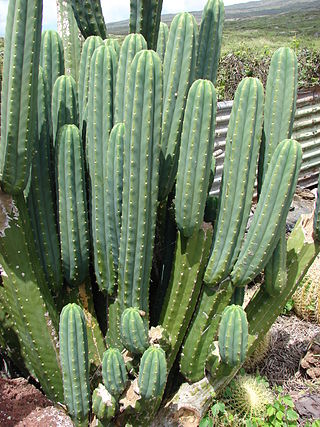
Echinopsis pachanoi —known as San Pedro cactus—is a fast-growing columnar cactus native to the Andes Mountains at 2,000–3,000 m (6,600–9,800 ft) in altitude. It is found in Argentina, Bolivia, Colombia, Chile, Ecuador, Peru and Venezuela, and it is cultivated in other parts of the world. Uses for it include traditional medicine and traditional veterinary medicine, and it is widely grown as an ornamental cactus. It has been used for healing and religious divination in the Andes Mountains region for over 3,000 years. It is sometimes confused with its close relative Echinopsis peruviana.

Copiapoa cinerea is a species of plant in the genus Copiapoa in the family Cactaceae. The epithet cinerea comes from the Latin word for ash, by reference to the color of the epidermis.
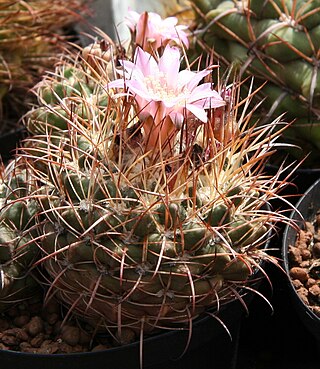
Neowerdermannia vorwerkii, also known as achakana, is a species of cactus from high altitudes in Bolivia and northern Argentina.

Cereus jamacaru, known as mandacaru or cardeiro, is a cactus native to central and eastern Brazil. It often grows up to 6 metres high.

Cleistocactus morawetzianus is a species of columnar cactus in the genus Cleistocactus, endemic to Peru.

Armatocereus rauhii is a tall, branched columnar species of cactus endemic to the north of Peru on the western slopes of the Andes.

Cereus aethiops is a species of cactus found from Uruguay to Argentina.

Pygmaeocereus bylesianus is a critically endangered species of Pygmaeocereus from Peru.
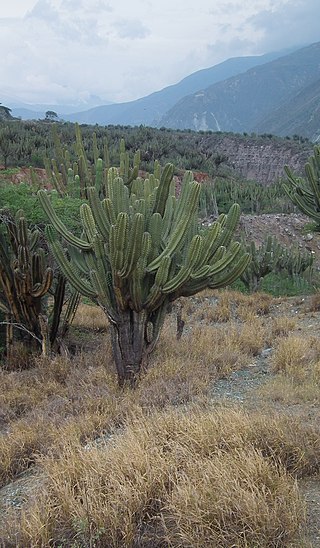
Cereus fricii is a species of Cereus from Venezuela.
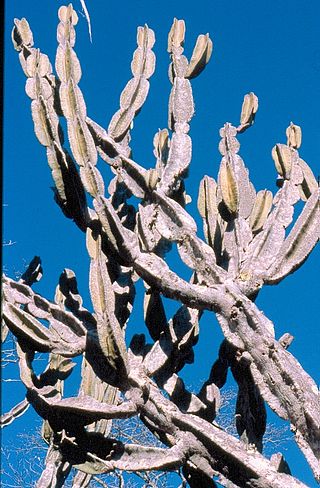
Cereus pierre-braunianus is a species of columnar cactus found in NE Goiás in Brazil.

Mirabella estevesii, synonym Cereus estevesii, is a species of columnar cactus found in Minas Gerais, Brazil. The first description was published in 2004 by Pierre Josef Braun as Cereus estevesii.

Mirabella albicaulis, synonym Cereus albicaulis, is a species of flowering plant in the family Cactaceae, native to Northeast and Southeast Brazil. It was first described by Britton and Rose in 1920 as Acanthocereus albicaulis.

Neoraimondia arequipensis, synonym Neoraimondia macrostibas, is a tree-like cactus native to western Peru. It was first described in 1835 as Cereus arequipensis.
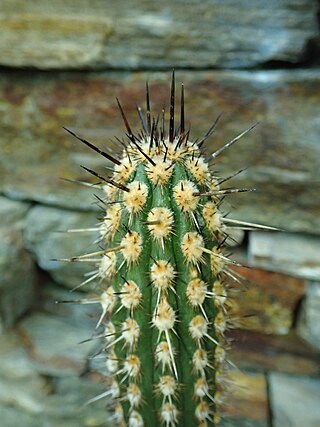
Weberbauerocereus cephalomacrostibas is a species of cactus in the family Cactaceae. It is found in Arequipa Department, Peru and consists of 2 subpopulations.

Armatocereus procerus is a species of Armatocereus found in southern Peru.
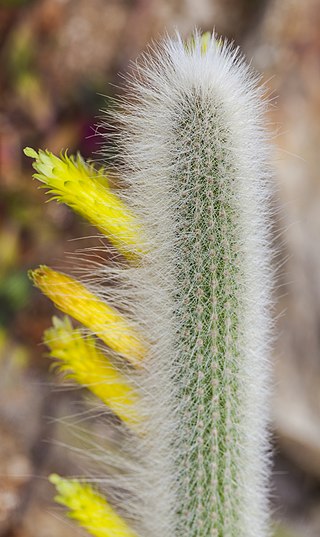
Cleistocactus ritteri is a species of Cleistocactus found in Bolivia.

Matucana aureiflora is a species of Matucana found in Peru.




















